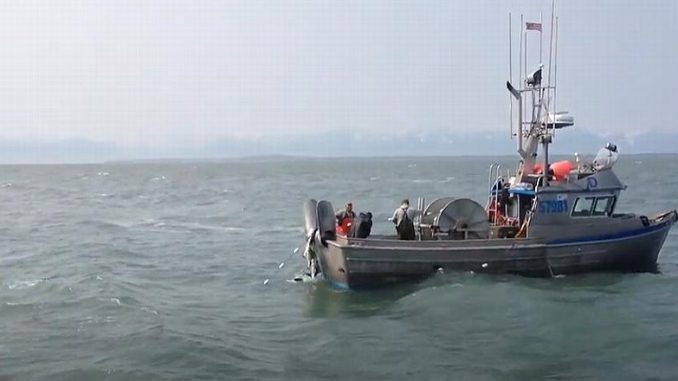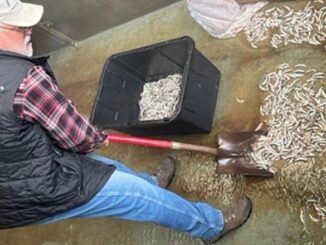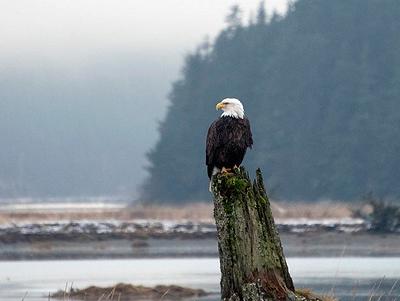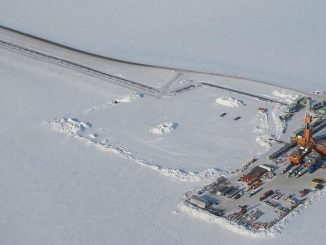
KENAI, Alaska, November 5, 2021 (ENS) – The Biden Administration has closed the federal waters of Alaska’s Cook Inlet to commercial salmon fishing for the 2022 Cook Inlet commercial salmon fishing season. This action closes a portion of the historically used fishing area for the Cook Inlet drift gillnet salmon fishery.
NOAA Fisheries, the agency responsible for the stewardship of national marine resources, published the final rule in the Federal Register November 2, and it takes effect 30 days after that.
The affected area is three nautical miles to 200 nautical miles off Alaska and is called the Cook Inlet Exclusive Economic Zone, EEZ.
The measure affects the Cook Inlet drift gillnet fishery, the only commercial salmon fishery that operates in the Cook Inlet EEZ.
It does not close salmon fishing in state waters, and the Cook Inlet drift gillnet fleet can continue to operate in state waters.
The State of Alaska will continue to manage Cook Inlet salmon fishery sectors within state waters, from the shoreline out three nautical miles, and may choose to modify management policies in future seasons in response to this federal action.
Fishermen in Cook Inlet caught more salmon and took in higher earnings in 2021 than they did the year before, according to the 2021 Harvest Summary issued by the Alaska Department of Fish and Game this week.
But the situation is not good for commercial salmon fishers in the Cook Inlet EEZ.
“What you’ve got is a bad combination of a catch that’s been falling and a price that is also down from two years ago,” Gunnar Knapp, a professor emeritus at the University of Alaska Anchorage Institute of Social and Economic Research, told KDLL Public Radio in Kenai.
And, the State of Alaska appears to be choosing oil and gas development over commercial salmon fishing in the Cook Inlet.
The federal Bureau of Ocean Energy Management, BOEM, is now accepting public comments on its Environmental Impact Statement analyzing the proposed leasing of over a million acres of Lower Cook Inlet seafloor for more oil and gas development in 2021 (Lease Sale 258).
AlaskaFishRadio reports there is fear amongst its listeners that “the frontier waters of Lower Cook Inlet will become an industrialized morass of pipelines, offshore platforms and onshore facilities.”
Today, the Cook Inlet region supports a mixture of salmon uses: commercial, recreational, personal use, and subsistence.
Home to over 60 percent of Alaska’s residents, issues of urbanization, road building, and the rise of invasive species are jostle for attention with the changing climate and increased conflict among user groups for limited salmon resources.
A 2028 report by researchers from the University of California Santa Barbara, “The State of Alaska’s Salmon and People,” concludes that, “The conflict over allocation in Upper Cook Inlet has arisen due to low Chinook returns and subsequent management decisions, creating discord within communities in the region.”
2022 Closure Results From a Lawsuit
The NOAA final rule is necessary to comply with a U.S. Court of Appeals for the Ninth Circuit decision and to ensure that the federal Salmon Fishery Management Plan, FMP, is consistent with the Magnuson-Stevens Fishery Conservation and Management Act.
The North Pacific Fishery Management Council first developed the Salmon FMP under the Magnuson-Stevens Act more than 40 years ago.
The current Salmon FMP excludes designated federal waters in Cook Inlet, and that has allowed the State of Alaska to manage commercial salmon fishing in the area.
Cook Inlet commercial salmon fishermen and processors challenged the exclusion of the Cook Inlet EEZ from the Salmon FMP.
After appeal, the United States Court of Appeals for the Ninth Circuit sided with the fishermen, ruling that the Cook Inlet EEZ must be included in the Salmon FMP to comply with the Magnuson-Stevens Act.
As a result, the North Pacific Fishery Management Council unanimously recommended, and NOAA Fisheries is implementing, Amendment 14 to the Salmon FMP, which addresses the Cook Inlet EEZ and its commercial salmon fishery.
Developing Amendment 14 took four years, from 2017 to 2020, as NOAA Fisheries and Alaska Department of Fish and Game negotiators and the public worked it out. The conclusion was that closing the Cook Inlet EEZ to commercial salmon fishing optimized conservation and management of the Cook Inlet salmon fishery.
The Council explained, “The closure is consistent with the Council’s longstanding salmon management policy to facilitate salmon management by the State of Alaska and avoids the introduction of an additional management jurisdiction and the associated uncertainty into the complex and interdependent network of Cook Inlet salmon fishery sectors.”
The State of Alaska itself issued an emergency order closing the 2021 Upper Cook Inlet commercial salmon fishing season in several areas this year, and now many commercial fishermen are very unhappy with the federal closure.
“It really affects all of the user groups in Cook Inlet,” said Alaska Senate President Senator Peter Micciche, a Repuiblican. “Because by shutting down the EEZ – I’m a Cook Inlet commercial fisher, I’m a drifter, I spend about 50 percent of my time or more fishing the EEZ, the federal waters of Cook Inlet, where the drift gillnet fisheries take place – this closure is substantial.”
“It’s going to lump all user groups in one small area, near the rivers,” Micciche said, “and that’s going to impact every user group.”
Featured image: Cook Inlet Alaska drift fishing boat had a good season in 2016. Screengrab from video by Ben Heaverley)



